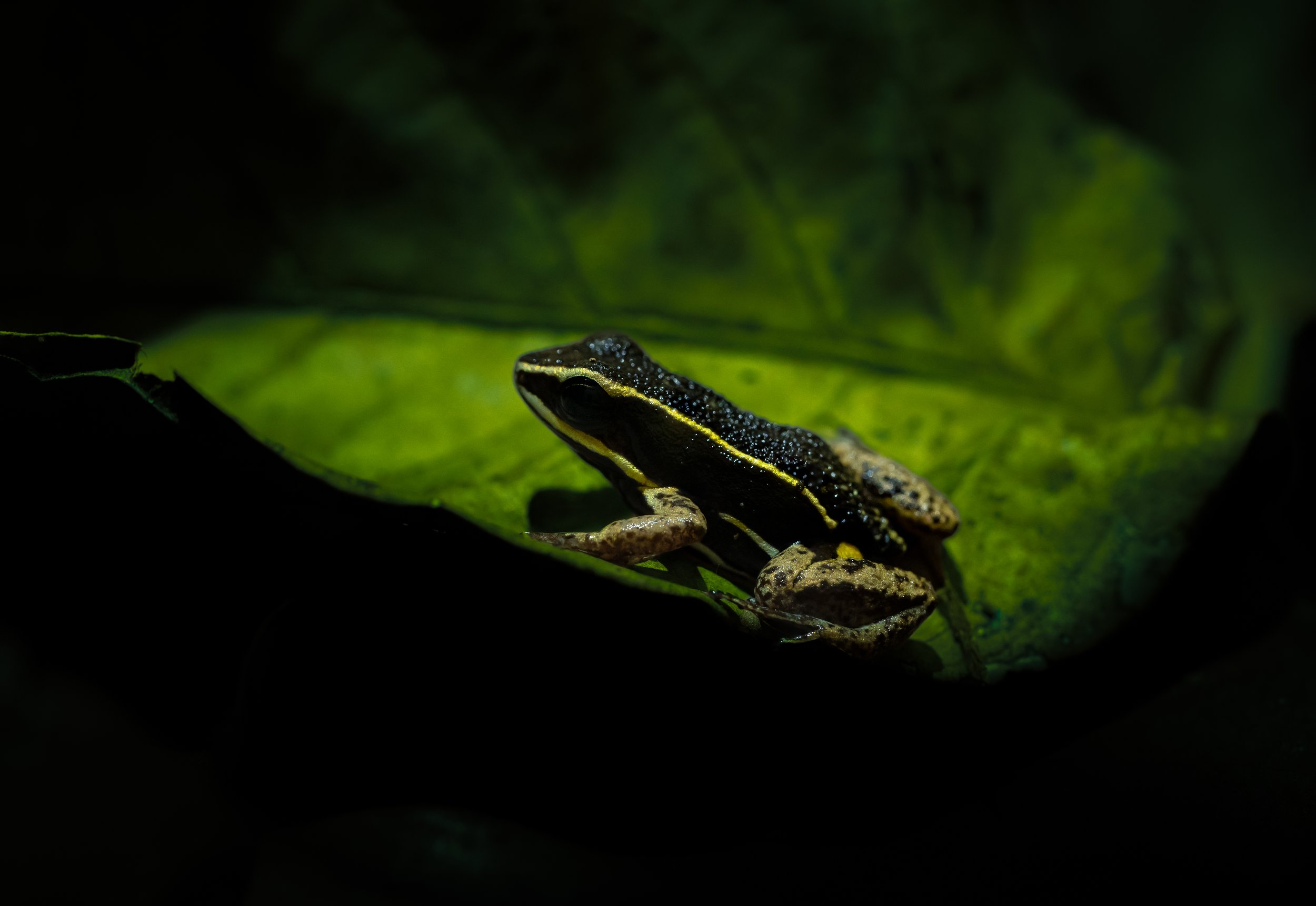
Poison Frogs
Poison frogs have the ability to sequester lipophilic alkaloids from dietary arthropods, and store them in their granular glands. They evolved autoresistance and detoxication mechanisms, as well as physiological novelties for alkaloid transport and storage.
The main goal of this research project is to understand how poison frogs acquire and metabolize its chemical compounds
INSTITUTIONS INVOLVED
This project aims to understand chemical defense in poison frogs. For that, we will collect different species occurring in Brazilian rainforest, and compare their physiological defensive mechanism.
Also, we will spread our research findings to non-expert audience through a short-documentary produced by JungleLens.
About the project
Publications
Defensive alkaloid variation and palatability in sympatric poison frogs
Keywords: Allopatry; Chemical defense, Dart-poison frogs; Dendrobatidae; Sympatry
Albuquerque-Pinna et al. 2024
Gas-Phase Fragmentation Reactions of Protonated Pumiliotoxin (+)-251D and Allopumiliotoxin (+)-267A in ESI-MS/MS
Keywords: Allopumiliotoxin (+)-267A; Alkaloid; Fragmentation mechanism; Mass spectrometry; Pumiliotoxin (+)-251D
Minder et al. 2024







